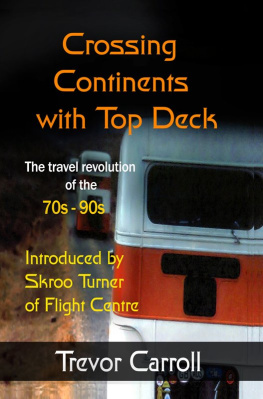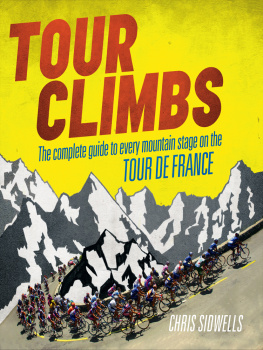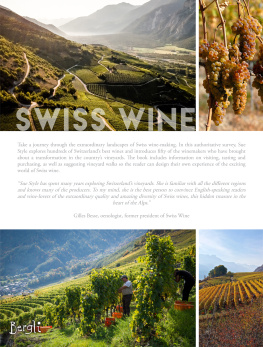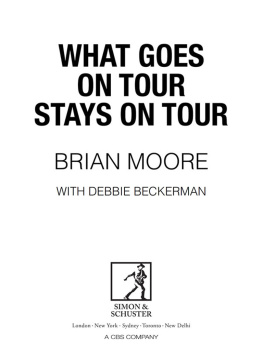SLOW TRAIN TO SWITZERLAND
For my parents, Jenny & David,
who started me off on this journey

SLOW TRAIN TO SWITZERLAND
One Tour, Two Trips, 150 Years
and a World of Change Apart
DICCON BEWES

First published by
Nicholas Brealey Publishing in 2013
35 Spafield Street | 20 Park Plaza |
Clerkenwell, London | Boston |
EC1R 4QB, UK | MA 02116, USA |
Tel: +44 (0)20 7239 0360 | Tel: (888) BREALEY |
Fax: +44 (0)20 7239 0370 | Fax: (617) 523 3708 |
www.nicholasbrealey.com
www.dicconbewes.com
Diccon Bewes 2013
The right of Diccon Bewes to be identified as the author of
this work has been asserted in accordance with the Copyright,
Designs and Patents Act 1988.
ISBN: 978-1-85788-609-2
eISBN: 978-1-85788-976-5
British Library Cataloguing in Publication Data
A catalogue record for this book is available from the British
Library.
All rights reserved. No part of this publication may be
reproduced, stored in a retrieval system, or transmitted, in any
form or by any means, electronic, mechanical, photocopying,
recording and/or otherwise without the prior written permission
of the publishers. This book may not be lent, resold, hired out or
otherwise disposed of by way of trade in any form, binding or
cover other than that in which it is published, without the prior
consent of the publishers.
Printed in Finland by WS Bookwell.
CONTENTS
In which we decide to take a historic tour to Switzerland |
In which we cross paths with our fellow travellers, cross the Channel by boat and cross France by train |
In which we go to an English church in Geneva, meet two Swiss rivers and head for the French hills |
In which we see snowy Mont Blanc, visit the icy Mer de Glace and walk through rainy Chamonix |
In which we change back from France to Switzerland, switch over from French to German and move up from Sion to Leukerbad |
In which we hike over the Gemmi Pass, watch sheep run down the hillsides and admire the Swiss tunnels under the Alps |
In which we take a break in Interlaken, take a hike to the Staubbach Falls and take a trip to Kleine Scheidegg |
In which we walk to the Grindelwald glacier, stay at the Giessbach falls and travel along the Golden Pass line |
In which we get up at 5am for the sunrise on Rigi, see Lucerne in four hours and return home after three weeks away |
In which we discover what happened afterwards |
In which I get a big surprise |
FOREWORD
Change is a funny thing to try to assess. Often it passes by without being noticed, but equally often it hits you in the face when you least expect it. And what can be hardest is getting enough distance from events to look back and see what actually happened. Fortunately, fate sometimes plays a helping hand, giving you the chance to see into a world or time other than your own. In my case, fate came in the form of a long-forgotten travel journal that was but a footnote in some English guidebooks on Switzerland.
And that is exactly where I discovered the journal while researching my first book four years ago. It didnt take long to track down a copy online, in a second-hand bookshop in Amsterdam, of all places. A few days and some euros later, a small package arrived in my post box: inside, a little hardback book, 126 pages long, its sky-blue dust jacket decorated with edelweiss. Not the original, of course, but an edition printed 50 years ago for the centenary of a landmark tour, one that would change a country and launch a new form of leisure activity into the world. This was a trip where women in huge dresses hiked across glaciers, where trains were a slow but exciting novelty, and where the landscape left the author almost speechless with wonder.
In a moment of inspiration or madness (or both), I decided to follow the trail that author had left behind. Guided by a woman who had been dead for well over a century, I would set off across Europe to try to see it through her eyes. Along the way, I hoped to make a personal connection with her, despite all the differences and distance between us. She had gone in search of adventure; I would go in search of her. I had her journal, so I could follow her words, but I also wanted to find some trace of her in the places both of us were visiting. It was more than about having proof that she had been there before me; it was about making the link between her tour and mine, between tourism then and tourism now between the two of us.
And of course, I wanted to see how much had really changed since she made the same journey: not only the obvious aspects, such as journey times, but the changes you dont really think about. After years as a travel writer, would I see what travelling was like for those package pioneers? After years as a tourist, would I learn how it all began? After years as a Brit in Switzerland, would I discover how my fellow countrymen and women helped transform that country? And had Switzerland really been so different back then? I would soon find out.
It was a tour that changed the world of travel.
It was a journey that launched mass tourism.
It was an invasion that created modern Switzerland.
It was a trip I simply had to do.
So I did.

The route of the original tour in Switzerland
INTRODUCTION
They were found in a battered tin box in the post-war rubble of Londons East End: two large books with scuffed red leather covers that had contrived to survive the Blitz intact, thanks to their sturdy container. Even then, they were almost lost, tossed aside with all the other debris from the nightly bombings. Fortunately, someone discovered them before they disappeared for ever.
Together, the two volumes make up a complete journal, an account of a trip across Europe that took place many decades before. They are written in longhand, in a lovely sloping script that is perfectly legible but delightfully old-fashioned, and occasionally illustrated with pen-and-ink drawings of foliage curling round the text. More frequent are faded black-and-white pictures and colourised postcards that have been stuck in, making it as much a scrap-book as a diary. But there is very little personal information about the author, not even her full name, or how the books could have ended up in a bombed building 80 years after they were written. As for where she went, that sounded like a challenging destination for any Victorian lady:
We landed at Weggis, and if each man, boy and mule-keeper who attacked us had been a wasp and each word a sting, Weggis had possessed our remains. We were literally infested by, dogged and danced around by these importunates!
Next page










